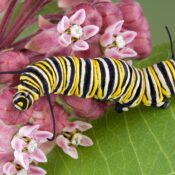It’s no secret the past few years have been rough for children. Emergency room visits by kids in mental-health crises went up 24 percent since 2019, and self-harm cases among minors have risen nearly threefold. As kids’ screen time jumped 52 percent during the pandemic, their sleep quality plummeted while their average body-mass index roughly doubled.
The 2022 U.S. Report Card of Physical Activity in U.S. Children and Youth gave kids a D-minus in physical activity, and a Columbia University study found only 8.8 percent of U.S. children meet federal guidelines for physical activity, screen time, and sleep combined. In addition, experts say children lost the equivalent of one-third of a school year since 2020. Health-care professionals and educators are crafting solutions, but resolving complex issues takes time.
Meanwhile, a powerful tool that can address all these problems at once is available now, and it’s free, effective, and compatible with other treatments: Kids get a significant mental, physical, and cognitive boost when immersed in real-world elements, including birds, trees, animals, rocks, water, and sky. They feel happier and more confident. They’re more active, less anxious, and learn better.
If this sounds Pollyanna-ish, well, that’s a normal response. Even scientists haven’t traced all the neurological and biochemical pathways behind these effects. But a plethora of controlled experiments around the world confirm the positive changes that happen when kids connect with nature are measurable and real.
Kids who grow up around ample green space have a reduced risk of depression, schizophrenia, eating disorders, and substance use. Other studies reveal playing in nature lessens childhood ADHD symptoms, with greater improvements in “untamed” settings. Some psychologists even think nature-immersion might be able to restore attention on a longer-term basis.
Children can profit from nature close to home: when they simply play with dirt, anxiety and stress levels drop, and kids have a greater sense of happiness. Bonding with nature improves eudaimonic well-being which is defined as a deep sense one belongs in the world and has a meaningful life.
Playing in green spaces raises youths’ confidence as they develop new skills in diverse terrain. Kids are more physically active outside; they sit less and play for longer stretches. Plus, outdoor time improves sleep, which helps children regulate their mood.
Another perk of nature-frolicking is better health. A recent study looked at immune markers in pre-schoolers at 10 urban daycare centers that had concrete play yards. At five centers, researchers built “forests” for kids to use, trucking in topsoil and native trees, shrubs, and flowers. After four weeks, kids who played in the ersatz forests had indicators of stronger immune systems – lower Interleuken-17A and higher T-cell counts – compared to their initial baseline and the control group.
The research team said a nature-poor childhood, typical of our culture where 80 percent of us are urban-dwellers, results in “un-educated immune systems.” This may render kids prone to immune-mediated ailments such as severe allergies and celiac disease.
Immune systems aren’t the only things “educated” by nature. Academic education is enhanced, too. When pupils spend time outdoors, they absorb material faster and retain more of what they learn. And the more time kids spend in field, forest, or stream, the greater their academic gains are.
A 2019 research paper from the University of Chicago says connecting with nature “…improves working memory, cognitive flexibility, and attentional control.” Students who looked out at green space for 40 seconds before a mental exercise did better than those who didn’t. Even listening to natural sounds raised scores on tough academic tests.
It’s possible nature makes kids nicer: primary-school students were kinder to peers and adults after forays into nature than after visiting urban landmarks. And human-nature connection aids the planet because it fosters pro-environmental sentiment and behaviors.
We know why it’s crucial to get youths outside – the question is how. Fortuitously, kids have an innate attraction to nature; to explore and examine the real world. Adults can help by taking kids to green spaces, which may be challenging for folks in urban centers. But remember, any patch of dirt is good. Gear like magnifiers, notebooks, trowels, and containers can enrich kids’ exploration.
Youngsters need to form their unique relationship with the natural world; adults should observe children and keep them safe, but let them find their own way. When grownups ask children what things attracted their attention, it validates their interests. Allow kids to explore nature indoors as well. Give them space (within reason) at home or in the classroom for moss, rocks, bark, and other found items.
Ideas for involving teens with nature include using smartphones to investigate the natural world. Free phone apps to identify plants, insects, and birds abound. Teens respond well if they can relate directly. They remember yellow and black birch because the twigs tase like wintergreen. Spicebush smells like cloves while black cherry reeks of bitter almond. Teen girls have particular respect for the white pine when they learn of its historic link with women’s rights in America. With competent supervision, kids and youth can make a superb pink lemonade from staghorn sumac berries. Your nearest Extension office can provide more ideas and resources, and some locations offer youth nature programs as part of their education mandate.
Let’s take the kids in our lives outside more. It’s our better nature.
Become a Saturday Evening Post member and enjoy unlimited access. Subscribe now




Comments
As a senior citizen I grew up playing outside in all kinds of weather and every day after school until dinner time and then after dinner until the street lights went on. I can honestly say I was a happy kid. I do not remember feeling ‘depressed’ or anxious or worried hardly at all. Life was fun – no one had televisions yet so we kids played games and then made up our own games and except for contagious childhood diseases like chicken pox, mumps, and measles, we rarely even had colds. Kids played outside, no one stayed inside unless they were not feeling well.
Our parents encouraged us to play outside and didn’t mind when we played in dirt or came in with skinned knees or runny noses. I was happy.
Kids today do not seem to be carefree, and lighthearted as I remember my friends and I were. They worry too much, they say they have ‘anxiety, they are fearful and afraid to take chances. They turn inward instead of outward…sad
Kids are bombarded with crime reports, wars, killings, gangs, fights, … we as adults must change this if we want to raise mentally healthy children in this century.
Let’s go backward because going forward today even scares me!
None of these positive benefits are surprising. I did not know all of them by any means though, and the depth and scope of the importance of being out in nature. Many of the problems listed here including ADHD, eating disorders, substance abuse and a depressed immune system can directly tied to our neurotic, indoor “man made” world of suffocation.
It’s something the bio-pharmaceutical complex loves, so they can put kids on all kinds of drugs in their ‘nothing’s too low’ unethical quest for money. Much of this applies to adults of course who don’t come in contact with nature as well. Maybe America wouldn’t be in the mess it’s in to this extent, if adults did so as well. It would certainly help offset negative things we can’t control to a better extent.
It’s been way too hot for awhile now, but I’m looking forward to spending quality time with the horses, be it just quiet petting time, some trail riding, or both. It’s actually always both, who am I kidding; please. I’m fortunate to know nice ($$) people that have a ranch with horses and goats (love them too!) to give me hope, help me cope with life’s heavy loads and feel balanced, calmer and happier just being themselves. They really are love and peace on earth.